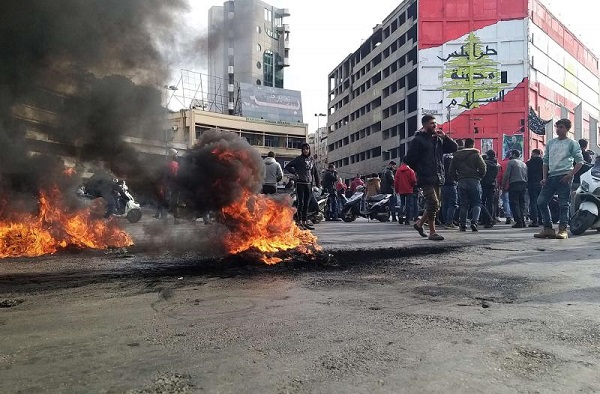Alwaght- Lebanon’s cities have once again become protest scenes in recent days. Media reports said that so far one protestor was killed as a result of the clashes between the demonstrators and the police in Tripoli north of the country.
What has reignited the protests in the Arab country? Will Lebanon move towards intensified social unrest as the fury boils over amid power vacuum caused by a failure of the political parties to form a new government?
Lebanon and the array of crises
The spark for a new round of protests began with the announcement of a quarantine extension and travel restrictions by the caretaker government to prevent further spread of the coronavirus.
Such a decision has a direct impact on the livelihood of a large part of society amid a severe economic crisis.
Since the COVID-19 outbreak in 2019, Lebanon recorded 293,157 infections and 2,621 deaths. This month, the country ranked among the hardest-hit nations globally, pushing the officials to re-impose lockdown.
The restriction includes 24-hour curfew with just one hour freedom from its limitation. Having in mind that wage workers account for about half of the nation’s labor force, the restriction began to set off the alarm bells for them.
"We are very concerned that vulnerable families and their children will be forced to deal with a catastrophe alone," said Save the Children charity.
This comes while Lebanon since 2019 has been grappling with its worst economic crisis since the civil war of 1975 to 1990.
More than half of the Lebanese population now lives below the poverty line, while the national currency, pound, has lost more than 80 percent of its value against the US dollar on the black market, a UN report has noted.
According to the International Monetary Fund (IMF), the country’s GDP fell 25 percent last year, while there was a 144 percent price hike over the same period.
As the situation aggravated, Lebanese banks withheld full access of the clients to their hard currency deposits. The clients are now allowed to change their foreign currency to pound with half the price of the black market and thus incur considerable losses, a policy leaving its negative effects mainly on the small and medium depositors.
The economic downturn has exacerbated the outbreak of the coronavirus. World Food Program, a UN agency, said that in June last year, COVID-19 and the measures to combat it pushed nearly one in three Lebanese people into unemployment.
The Beirut port huge blast on August 4 last year was another major tragedy for the Lebanese government. The incident caused the worst peacetime disaster in the country, leaving over 200 dead and causing billions of dollars in damage to the government. The explosion also led to Hassan Diab government’s fall.
Most importantly, Lebanon has been without government and struggling with a political limbo since the resignation of Hassan Diab this summer. Political leaders have not been able to form a new government six months after the disaster.
Lebanon, on the other hand, has one of the largest foreign debts in the world. The country defaulted on its foreign debt for the first time last year, and an effort for IMF emergency loans failed after months-long negotiations.
Still, the IMF stated in mid-January this year that it has approved $246 million in emergency aid to provide cash assistance to around 800,000 Lebanese reeling under the compounded crisis.
Authorities said that they have begun monthly payments reaching 400,000 Lebanese pounds ($50) to about 230,000 households.
Ramzi Moucharfieh, the minister of social affairs and tourism in the caretaker government, last week announced that three-fourths of the over-six-million Lebanese population need aids.
In the tough current conditions, the hope of finding a settlement to the Lebanese crisis first of all goes through the formation of the government that can negotiate and attract international aids and get the economy back on the track. However, after half a year, there is no political progress in sight.
Saad Hariri, who along with his Future Party has played a key role in creating a political crisis by insisting on ousting other political groups from power under the pretext of forming a technocratic government, is the designate-prime minister. He has not taken a serious action to solve the differences with the rivals and is mainly influenced by Saudi Arabia’s views and policies towards Lebanon which seek to cut off Hezbollah from the government even if it takes full collapse of Lebanon. Saudi Foreign Minister Faisal bin Farhan Al Saud in an interview with Al-Arabiya news network, a Saudi-run broadcaster, said that Lebanon will make no progress without essential reforms and Hezbollah ouster from the politics.
While with Trump's departure the French government hopes to change Washington's approach to Lebanon and bring the two countries closer over Lebanon’s need for a new government, Riyadh continues to see fueling the crisis as the best way to reduce Hezbollah’s political power and influence in the Lebanese politics. Given its mean approach to Lebanon, Saudi Arabia likely to act for aggravation of the crisis through pushing ahead brewing new round of demonstrations.



























